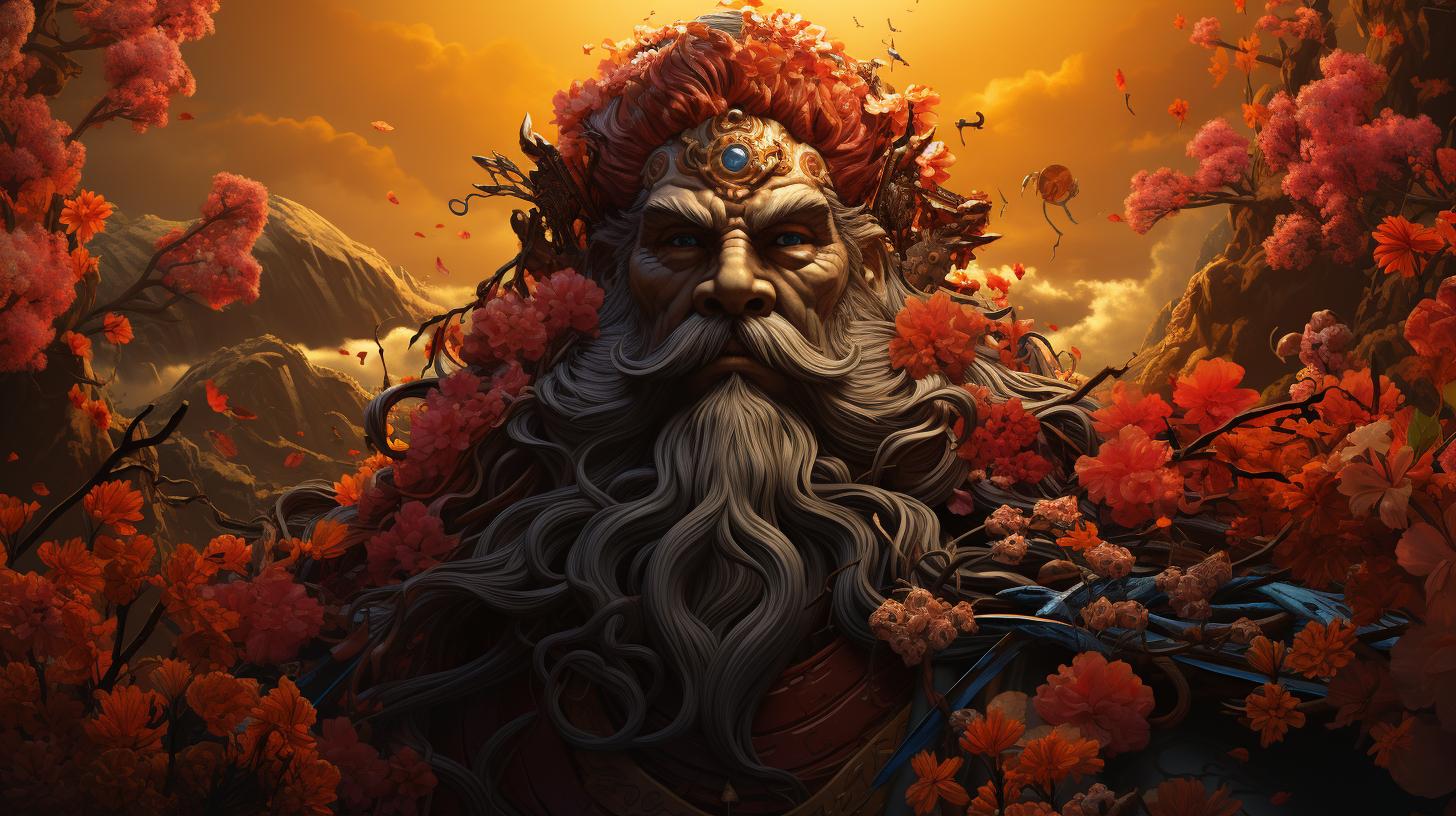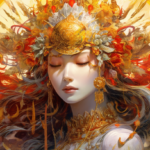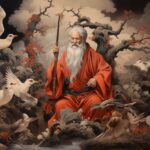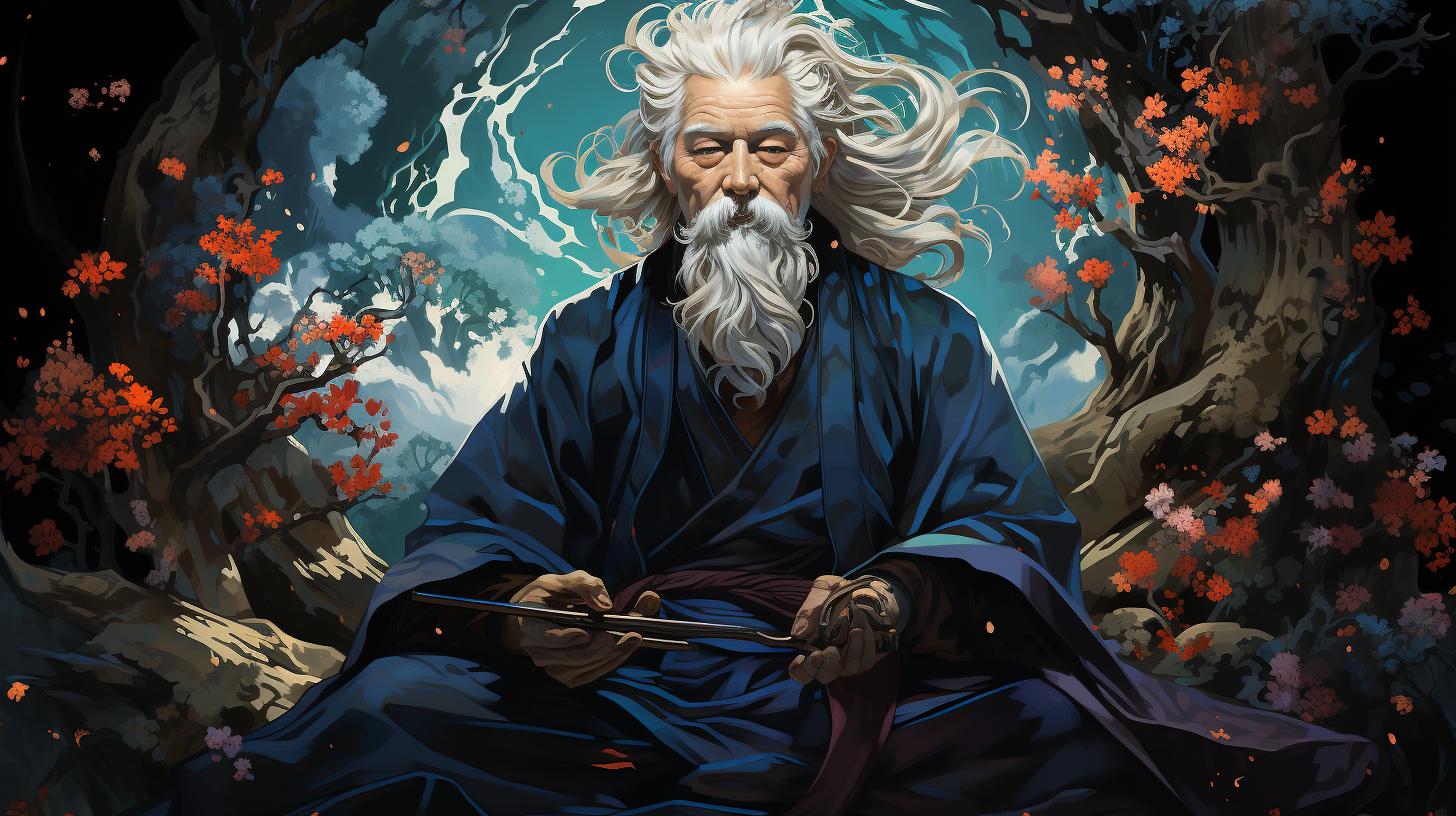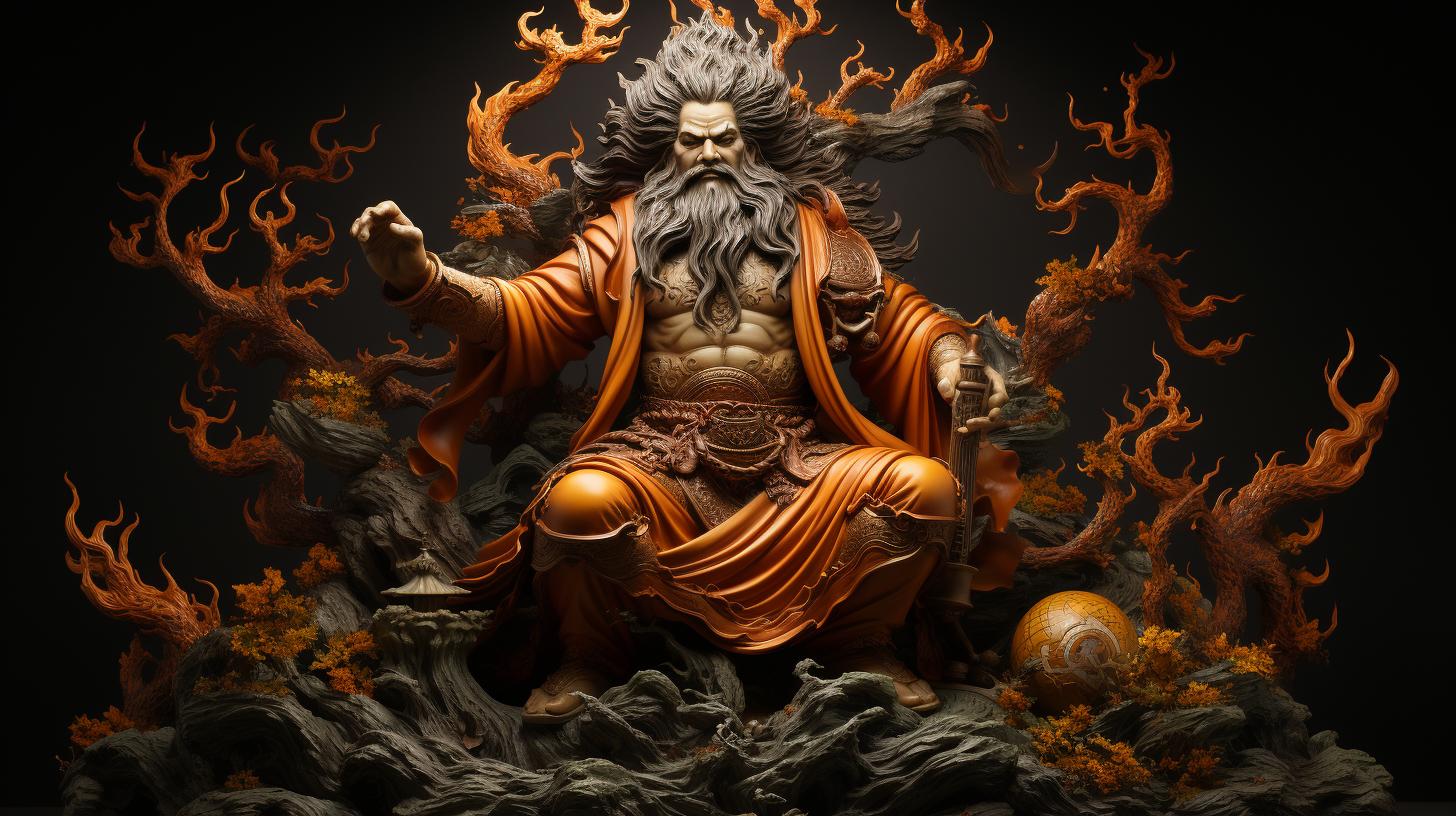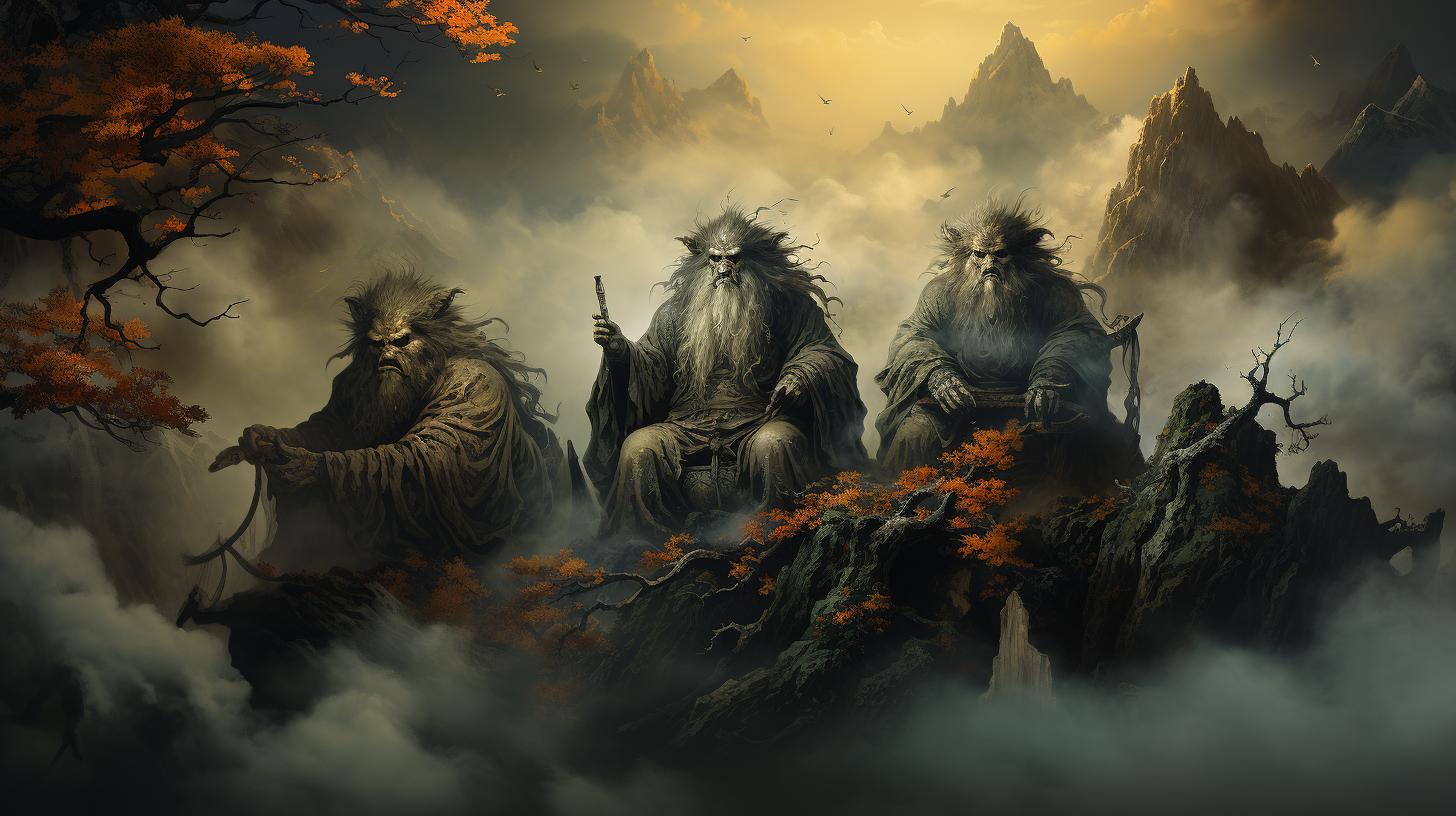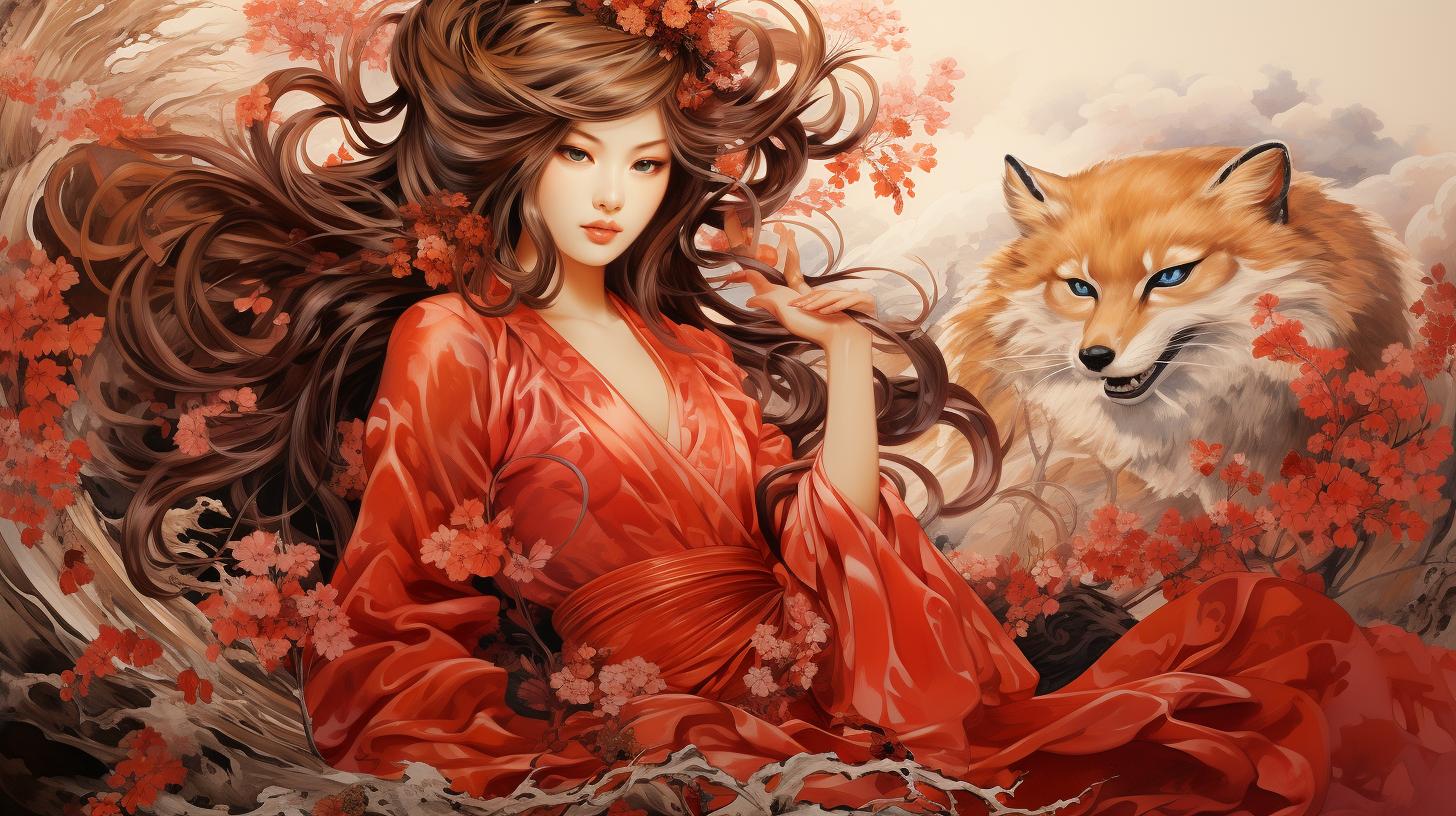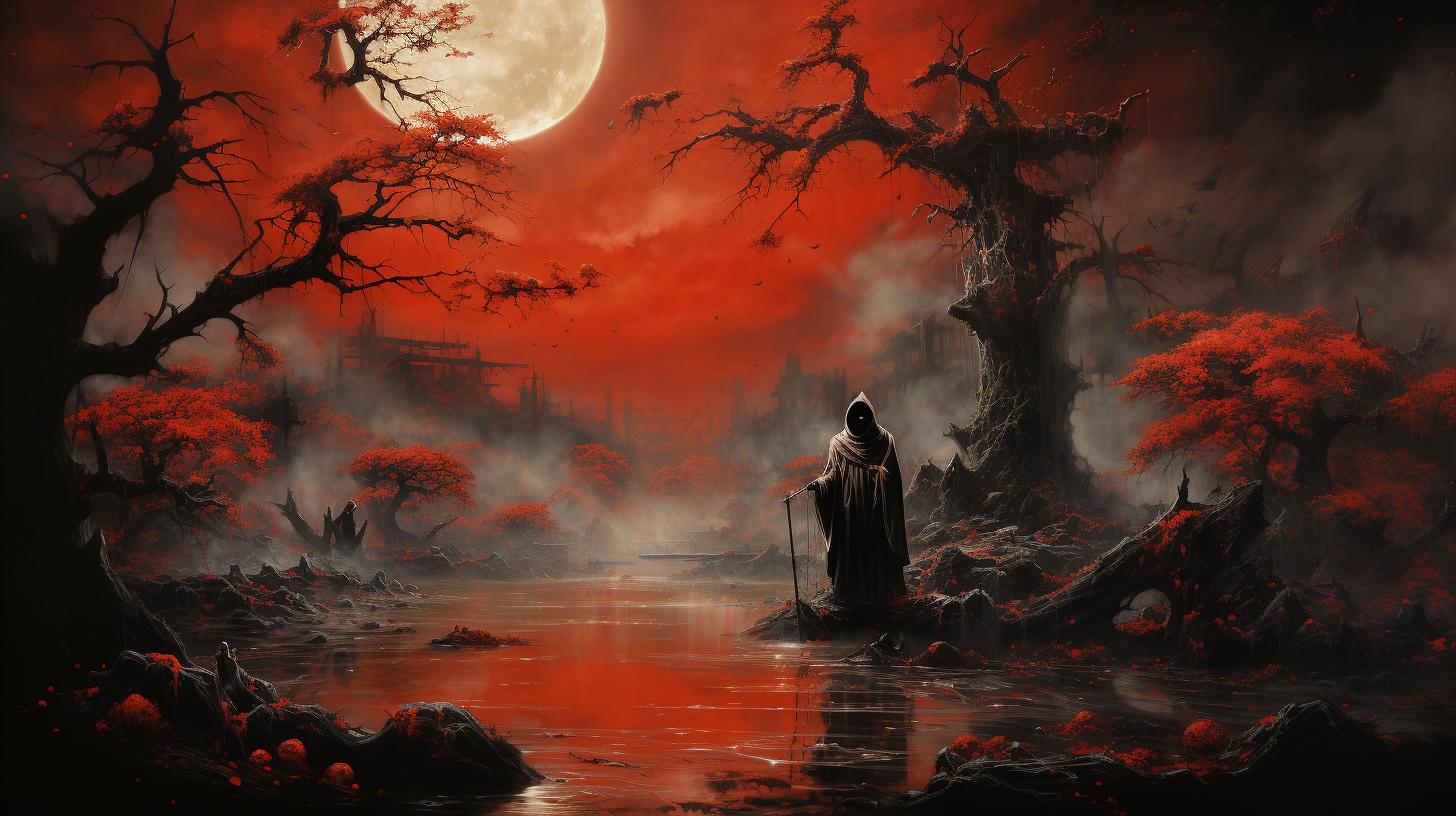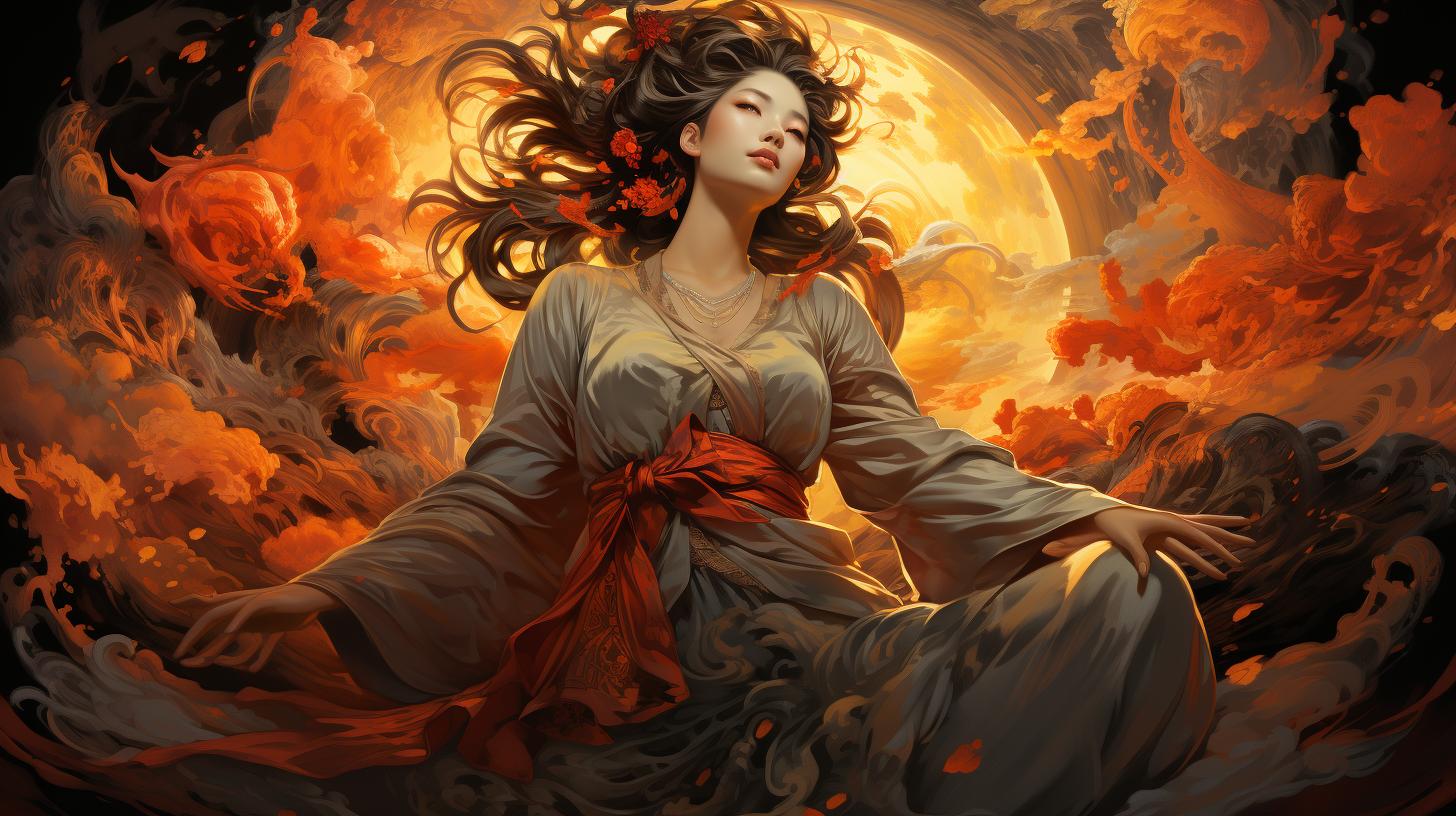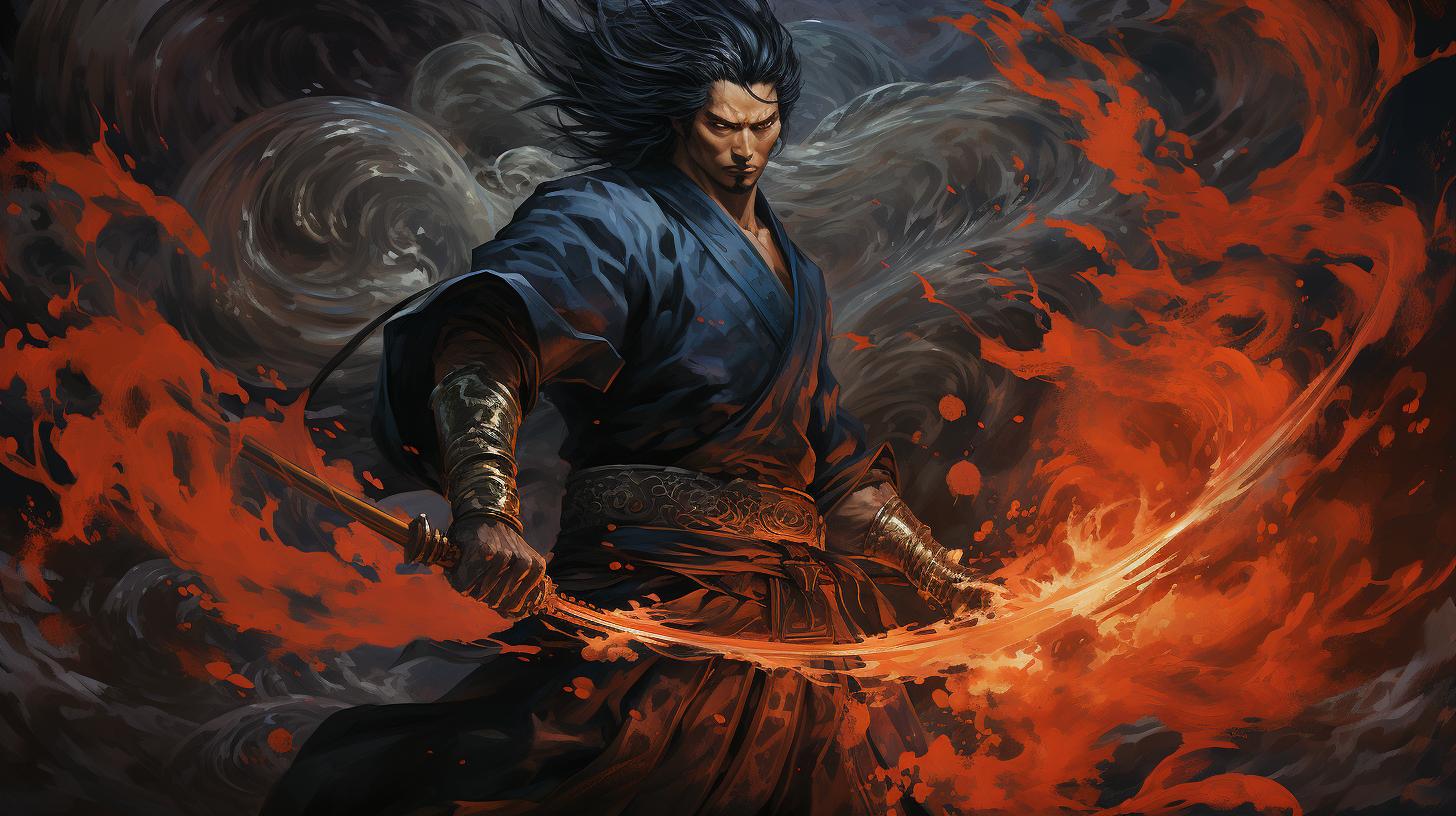Kuebiko God: The Wisdom, Knowledge, and Agricultural Deity
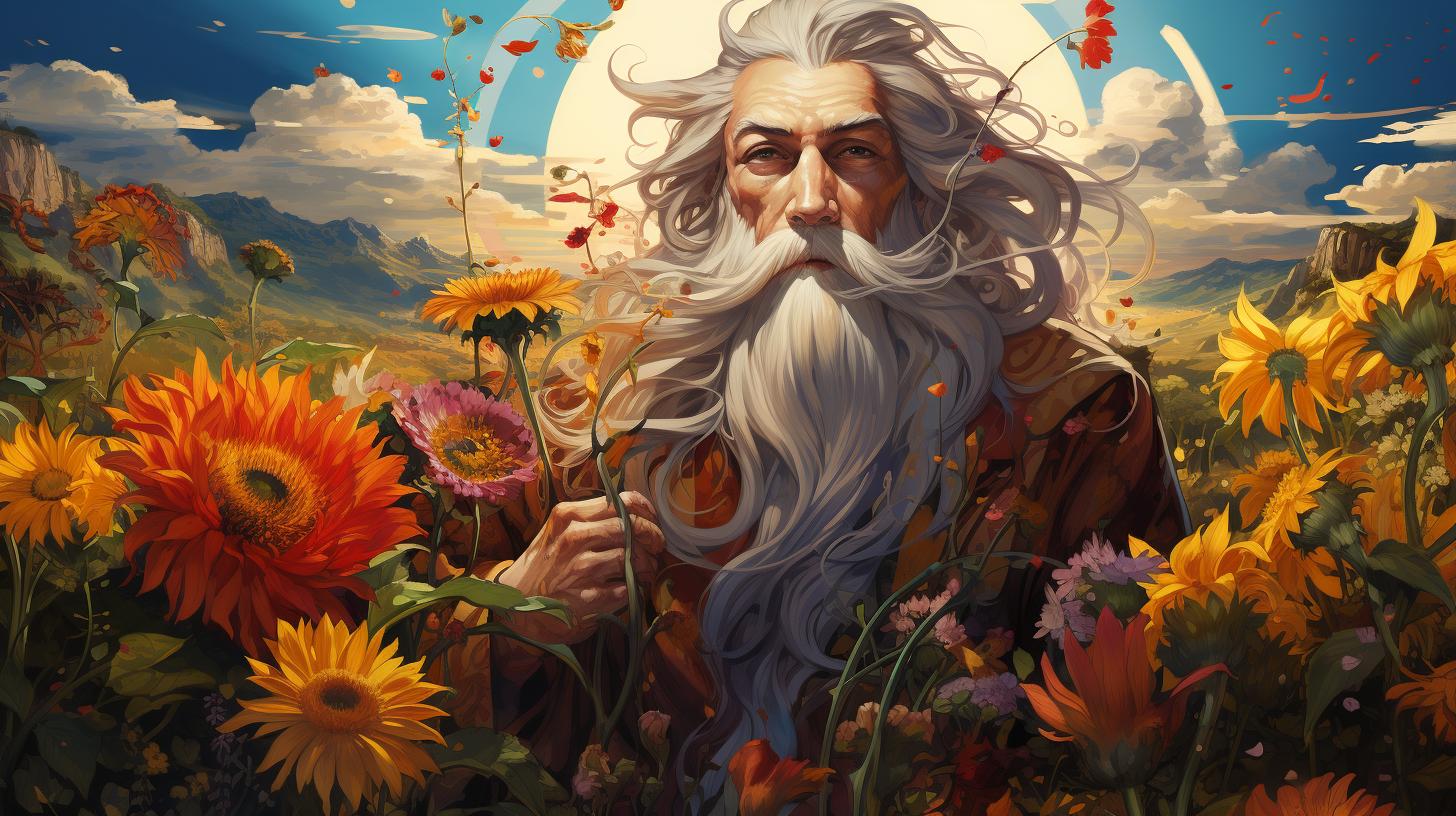
Kuebiko, the god of wisdom, knowledge, and agriculture in Japanese mythology, is represented as a scarecrow in the mountain rice fields. Despite being unable to walk, Kuebiko possesses a comprehensive awareness and vast understanding of the world.
Adored as the deity of agriculture and wisdom, Kuebiko is worshipped in shrines throughout Japan. Additionally, there is an artwork that depicts a melancholic scarecrow, exploring the role of scarecrows as guides and the fear as a compass in life.
This article delves into the origins, legends, worship, and mythological connections of Kuebiko, as well as the wisdom it embodies.
Learning about Kuebiko
In the realm of Japanese mythology, there exists a fascinating deity known as Kuebiko. Revered as a symbol of wisdom, knowledge, and agriculture, Kuebiko holds a special place in the hearts of the Japanese people.
With origins deeply rooted in ancient folklore, this divine entity embodies the essence of the land and its bountiful resources.
Embarking on a journey to explore the mystique surrounding Kuebiko, we delve into the rich tapestry of legends, symbolism, and worship associated with this deity.
Through this exploration, we aim to unearth the profound wisdom and insights that Kuebiko conveys.
Join us as we unravel the multifaceted facets of Kuebiko’s existence, from the significance of its portrayal as a scarecrow in the mountain rice fields to its pivotal role in the realm of agriculture and wisdom.
We also delve into the mystical connections Kuebiko has with other mythological beings, as well as the intriguing tales that involve this deity.
Furthermore, we analyze the implications of Kuebiko’s wisdom, discovering how it can serve as a guiding light in our lives.
Through its deep-rooted knowledge and understanding, Kuebiko illuminates a path to self-discovery and enlightenment, offering valuable insights that can shape our decisions and perceptions.
Exploring the artistic realm, we uncover an intriguing artwork that revolves around Kuebiko.
Capturing the essence of sadness and immobility, this symbolic representation provokes introspection and contemplation. We delve into the thought-provoking symbolism embedded in this masterpiece, exploring its themes and their significance within Japanese culture.
Prepare to embark on a captivating journey into the mesmerizing world of Kuebiko – a realm where wisdom, knowledge, and agriculture intertwine to guide us towards a deeper understanding of ourselves and the world around us.
What is Kuebiko?
Exploring the essence and significance of Kuebiko is essential to understanding this unique deity in Japanese mythology.
The Meaning and Symbolism of Kuebiko
Kuebiko embodies profound symbolism that goes beyond its representation as a mere scarecrow. Symbolizing wisdom, knowledge, and agriculture, Kuebiko serves as a powerful embodiment of the collective wisdom derived from experience and observation.
Kuebiko in Japanese Mythology
Within the rich tapestry of Japanese mythology, Kuebiko holds a significant place. Revered as Yamada no sohodo, the god of wisdom and the agricultural realm, Kuebiko is renowned for its extensive knowledge, despite being unable to physically move.
This immobility, however, does not restrict its awareness of the world and its inherent wisdom.
Depiction of Kuebiko as a Scarecrow
Kuebiko’s representation as a scarecrow in the mountain rice fields adds a fascinating layer of symbolism. The incorporation of scarecrows into religious practices and cultural beliefs portrays them as symbols of divine presence, with Kuebiko being a prime example.
These guardians of the fields not only serve in protecting crops but also signify the connection between humans, gods, and agriculture.
The Deity Kuebiko
The Deity Kuebiko holds a significant place in Japanese mythology, representing wisdom, knowledge, and agriculture. This section explores the origins and legends surrounding Kuebiko, its role in agriculture and wisdom, and the worship and shrines dedicated to this revered deity.
Origins and Legends of Kuebiko
Kuebiko’s origin is rooted in ancient Japanese folklore, passed down through generations. Legends tell of its emergence as a divine being associated with the wisdom of the people and the bountiful harvests of the land.
Stories often depict Kuebiko as a divine entity that enlightens humans with its comprehensive understanding.
Kuebiko’s Role in Agriculture and Wisdom
Kuebiko plays a vital role in the agricultural domain, symbolizing the interconnection between humans and nature. As a deity of agriculture, it embodies the wisdom required for successful cultivation, emphasizing the importance of harmonious coexistence with the environment.
Kuebiko’s knowledge extends beyond farming, encompassing a broader wisdom that guides individuals in various aspects of life.
Worship and Shrines Dedicated to Kuebiko
Across Japan, numerous shrines are dedicated to the worship of Kuebiko. These sacred places serve as gathering points for devotees seeking guidance, knowledge, and blessings from this esteemed deity. Among the well-known shrines is the Kuebiko Shrine in Sakurai, Nara, where believers express their gratitude and seek assistance in promoting fruitful harvests and acquiring wisdom.
Engaging with the worship of Kuebiko offers individuals a sense of connection to the agricultural heritage of Japan and the wisdom it encompasses. The annual rituals and festivities held at these shrines celebrate the relationship between humans and nature, honoring the divine essence of Kuebiko.
The Mythological Connections of Kuebiko
Kuebiko, the god of wisdom, knowledge, and agriculture, holds an intriguing place in Japanese mythology. This section explores the various mythological connections and references associated with Kuebiko, shedding light on its significance and role in ancient tales.
Kuebiko’s Involvement in the Ōkuninushi Legend
One notable mythological connection of Kuebiko is its involvement in the Ōkuninushi legend. According to the legend, Ōkuninushi, a small deity, seeks the assistance of Kuebiko in identifying a mysterious god who visited the Great Master of the Land.
It is Kuebiko who reveals that the visitor is Sukunahikona, a descendant of Kamimusuhi.
Other Mythological References to Kuebiko
Besides the Ōkuninushi legend, Kuebiko’s name and symbolism appear in various other mythological accounts. While not the central figure, Kuebiko’s presence adds depth and meaning to these narratives. These references reflect the reverence and significance attributed to Kuebiko in ancient Japanese culture.
In these myths, Kuebiko is depicted as a symbol of wisdom, knowledge, and agricultural prosperity. Its representation as a scarecrow reflects its association with the cultivation of rice, an essential aspect of ancient Japanese society.
The presence of Kuebiko in these tales highlights its role as a guide and source of insight for deities and humans alike.
- Mythological accounts often describe Kuebiko as possessing integral consciousness despite its lack of mobility.
- Kuebiko’s broad knowledge of the world reaffirms its association with wisdom and understanding.
- Sukunahikona’s connection to Kuebiko further establishes the intertwining relationships between various deities in Japanese mythology.
These mythological connections deepen the significance of Kuebiko as a god of wisdom and agricultural prosperity.
The stories featuring Kuebiko offer glimpses into the cultural and spiritual values associated with this deity, showcasing its timeless importance in Japanese folklore.
Exploring the Wisdom of Kuebiko
Kuebiko, the fascinating deity of wisdom, offers profound insights and knowledge that extend far beyond its physical immobility. Let’s delve into the depths of Kuebiko’s wisdom and uncover the role it plays as a guide in life.
Kuebiko’s Knowledge and Insights
Within the essence of Kuebiko lies an extraordinary wealth of knowledge and insights. This deity, despite its inability to walk, possesses an integral consciousness that encompasses vast awareness of the world.
It embodies the collective wisdom of generations, representing the ultimate connection between humanity and the natural cycles of agriculture.
Honored as the god of agriculture in modern-day Japan, Kuebiko symbolizes the cultivation of both crops and the intellect.
Its wisdom encompasses the intricate details of agricultural practices, offering guidance to farmers and cultivators about planting seasons, harvesting techniques, and sustainable farming methods. This divine entity serves as a beacon of knowledge, illuminating the community with its understanding of the land and the vital role it plays in sustaining human life.
The Role of Kuebiko as a Guide in Life
Beyond its association with agriculture, Kuebiko assumes a role that extends far into the realms of human existence. Comparable to a wise elder, this deity guides individuals along their life paths, offering insights and profound teachings.
It reminds us that wisdom can be found in stillness and tranquility, urging introspection and self-reflection as pathways to obtaining inner wisdom.
As a guide, Kuebiko teaches us to navigate the complexities of life by cultivating a deep connection with nature and embracing the cycles of growth and seasons of change.
It encourages us to observe the world with open hearts and minds, recognizing that wisdom can be discovered in the simplest of moments. Through its presence, Kuebiko inspires us to embrace the vastness of knowledge and encourages us to seek understanding in every aspect of our existence.
Key Takeaways
- Kuebiko possesses profound knowledge and wisdom in the realms of agriculture and human existence.
- This deity serves as a guide in life, offering insights and teachings through its stillness and connection to nature.
- Kuebiko’s role extends beyond its depiction as a scarecrow, representing the wisdom that can be found within everything and everyone.
The wisdom of Kuebiko transcends boundaries, inviting us to explore the depths of our own consciousness and discover the interconnectedness of all things.
By embracing the knowledge and guidance offered by this deity, we can navigate the complexities of life with greater wisdom and understanding.
The Artistic Representation of Kuebiko
Exploring the artistic representation of Kuebiko offers a deeper understanding of the deity’s symbolism and cultural significance in Japanese mythology. From the creation process to the symbolism infused in the artwork, this section delves into the captivating world of Kuebiko’s visual interpretation.
Creation and Symbolism of the Artwork
The artwork capturing Kuebiko’s essence is meticulously crafted and rich in symbolism. The sculptor, drawing inspiration from traditional Japanese artistry, skillfully molds a scarecrow figure adorned with a jacket and a top hat.
This representation serves as a metaphorical portrayal of the deity’s introspective nature and presence in agricultural landscapes.
The choice of a scarecrow symbolizes more than the physical form of Kuebiko. It represents the fragility and stillness inherent in the human condition, highlighting the significance of reflection and contemplation.
The jacket signifies a somber tone, reflecting the deity’s deeper connection to melancholy and wisdom.
Exploring the Themes of Sadness and Immobile Existence
Through the artwork’s evocative imagery, the themes of sadness and immobile existence come to life. The scarecrow’s motionless stance conveys a profound sense of inward focus and introspection. It represents the idea that sometimes, in stillness, we gain the most profound insights and wisdom.
Sadness, depicted through the artist’s skillful craftsmanship, serves as a powerful symbol of emotional depth and vulnerability. The artwork invites contemplation on the human experience, reminding us that even amidst the mundane and immobile, there lies a profound path to self-discovery.
The Significance of Espantapájaros in Japanese Culture
In Japanese culture, espantapájaros, or scarecrows, hold deep significance beyond their practical purpose of protecting crops. They are regarded as conduits to the divine, symbols of deity, and guardians of agricultural abundance.
Festivals dedicated to scarecrows celebrate their role in farming and acknowledge the interconnectedness of spirituality and sustenance in Japanese society.
The representation of the scarecrow in the artwork pays homage to these cultural beliefs, fostering a connection with Kuebiko as a deity rooted in agricultural traditions and wisdom.
- The artwork unveils the symbolic nature of Kuebiko’s representation through its intricate details.
- The somber attire and stillness embodied in the scarecrow reflect deeper themes of sadness and immobile existence.
- Espantapájaros holds significant cultural symbolism in Japanese society, representing spirituality and agricultural abundance.

